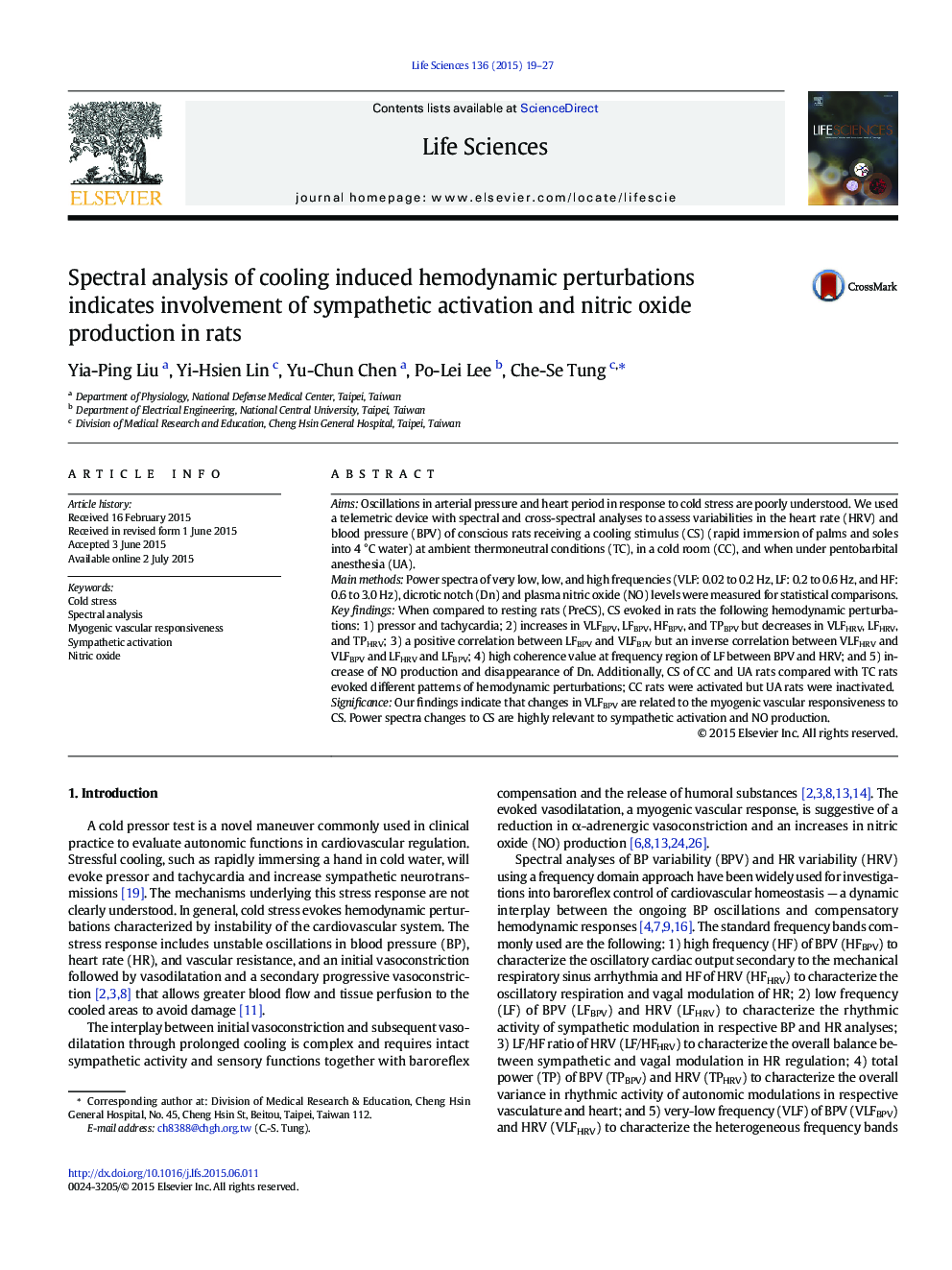| Article ID | Journal | Published Year | Pages | File Type |
|---|---|---|---|---|
| 2550865 | Life Sciences | 2015 | 9 Pages |
AimsOscillations in arterial pressure and heart period in response to cold stress are poorly understood. We used a telemetric device with spectral and cross-spectral analyses to assess variabilities in the heart rate (HRV) and blood pressure (BPV) of conscious rats receiving a cooling stimulus (CS) (rapid immersion of palms and soles into 4 °C water) at ambient thermoneutral conditions (TC), in a cold room (CC), and when under pentobarbital anesthesia (UA).Main methodsPower spectra of very low, low, and high frequencies (VLF: 0.02 to 0.2 Hz, LF: 0.2 to 0.6 Hz, and HF: 0.6 to 3.0 Hz), dicrotic notch (Dn) and plasma nitric oxide (NO) levels were measured for statistical comparisons.Key findingsWhen compared to resting rats (PreCS), CS evoked in rats the following hemodynamic perturbations: 1) pressor and tachycardia; 2) increases in VLFBPV, LFBPV, HFBPV, and TPBPV but decreases in VLFHRV, LFHRV, and TPHRV; 3) a positive correlation between LFBPV and VLFBPV but an inverse correlation between VLFHRV and VLFBPV and LFHRV and LFBPV; 4) high coherence value at frequency region of LF between BPV and HRV; and 5) increase of NO production and disappearance of Dn. Additionally, CS of CC and UA rats compared with TC rats evoked different patterns of hemodynamic perturbations; CC rats were activated but UA rats were inactivated.SignificanceOur findings indicate that changes in VLFBPV are related to the myogenic vascular responsiveness to CS. Power spectra changes to CS are highly relevant to sympathetic activation and NO production.
